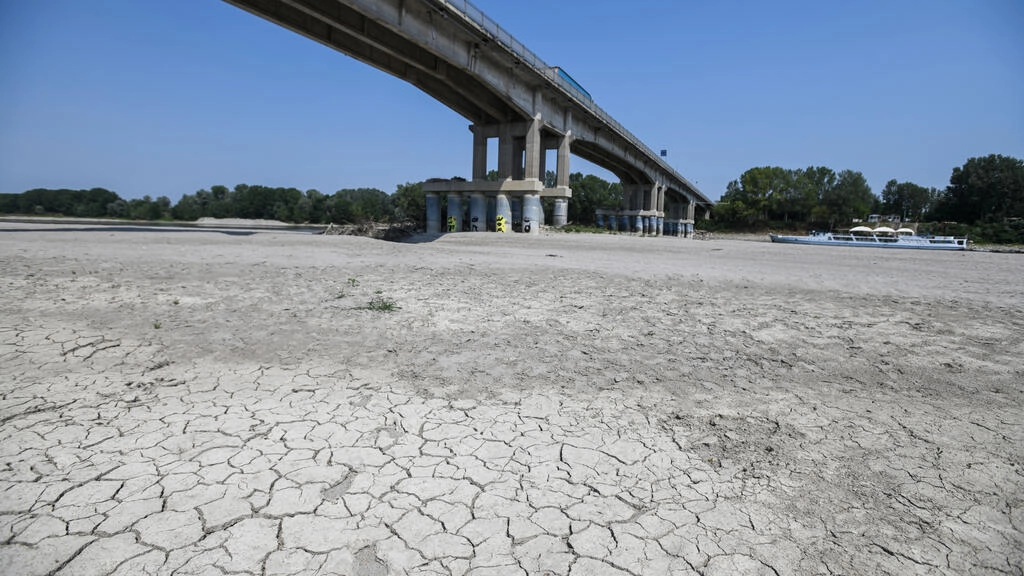The headlines are screaming the unthinkable. The Rhine, Danube, and Po Rivers are shrinking. Crops are being very badly affected. Shipping and movement of goods are being hit hard. Shortages of materials are damaging already stretched supply chains.
In the US the Big Drought has been going on for years. The water shortage has arguably generated more conspiracy theories than action. The European drought, however, has hit relatively quickly, and very hard. The Rhine is at incredibly low levels.
In a global context, drought is affecting the northern hemisphere. China is also suffering from a drought affecting grain production. The net picture is of a global food chain under a lot of stress at many points in basic production.
If this goes on for a few years, things could get a lot worse. Reduced melt in the Alps has long been predicted as causing major issues for the Rhine and Danube.
The difference between meteorological droughts and hydrological droughts
A meteorological drought is basically lack of rain and snow precipitation. A hydrological drought is systemic, related to water management, and often coincides with lack of rain.
The trouble here is that in Europe water-dependent systems are being hit simultaneously with the effects of lack of water. In Western Europe, this is atypical. Europe has been undergoing a series of droughts since 2014, but not on this scale. According to at least one source, the current environment is the worst for 2000 years.
A short character analysis of droughts.
This is what drought is all about. In Australia, we’re all too familiar with big, long, droughts. Generally speaking, they start locally and spread. Heat does make them a bit worse, but the real problem is the lack of circulation of moisture. The water cycle is severely disrupted. The process takes at least a few years. That’s when things are normal.

There is such a thing as a drought cycle, and it’s considered regular or semi-regular. Actually, you could also say it’s a matter of degrees of difference. A dry spell isn’t drought or anything like it. A real drought is never a short-term thing.
A big drought is a lot worse and its effects are wide-ranging. It’s a matter of scale and the compound effects of drought. In a major drought, the topsoil blows away. The soil nutrients also blow away. The soil biome is either destroyed or dormant.
It’s similar to desertification. Soil types in Europe vary a lot, but none of them are likely to escape unscathed in a serious drought. Agriculture changes the character of soils and specializes in them.
Those specialized soils, obviously, won’t take well to a total lack of water for years. Heat is very good at breaking down organic materials. Simply preserving the soils can be difficult.
Rebuilding these soils afterwards is what you’d call “an acquired taste”. It’s not like you can just get a watering can and everything springs back to life. The soil biology may restart, but what’s left of it? You see how complex this can get.
This “soil rehab” is also likely to be expensive and time-consuming. The supply chain won’t just spring back to life, either. In a long drought, businesses may not be around afterwards.
Damage control during a drought? It’s not easy.
It’s a dangerous economic cycle, and it’s pretty much inevitable that some businesses will be on the wrong end of it. Drought relief as required at the time and systemic drought recovery are essential to minimize the damage.
Sky farms and enclosed spaces that capture soil and plant moisture transpiration and recycle it are arguably the best options for maintaining production. There’s a catch, though; these things take time to set up, and the volume of production, obviously, can’t be the same as open fields without massive investment.
Big monocultures are particularly vulnerable, and most global grain, vegetable and fruit production is still done this way. That’s the elephant in the bathtub here. Old-style agriculture can’t really handle droughts. The methods must change.
Permaculture is the all-round, does-everything option, but it involves drastically different land management. This is “integrated farming”, using multiple plants to support each other. It does work, but it’s the exact opposite of corporate farming.
Corporate farming really isn’t tooled up to do this type of farming. That’s a pity because permaculture grows multiple crops whereas standard industrial farming only grows one crop.
Harvesting and recycling water are also essential. That water won’t come often, and it’s priceless. Recycling wastewater is also critical to long-term management.

The future could be a lot shorter than you think
There’s a very bleak, but possible scenario here. If agriculture and water supplies go offline at the same time for any extended time, the entire food supply chain will progressively degrade.
That means:
- Land degradation severely reduces available land for viable farming
- Reduced production capacity according to scale.
- Food price rises and shortages.
- Industrial supply disruption at all levels. (Industry uses more water than anyone else.)
- Basic resources degradation due to water supply irregularities
- Severe impacts on quality of life worldwide.
- Possible famines and large numbers of “food refugees” in deprived areas.
A major northern hemisphere drought lasting for 10 years could easily do all this. No soothsaying required; this is quite possible. Billions of people can be seriously affected in that short a time frame.
Just one more thing:
Humans can only survive for 3 days without water.
Simple enough?
________________________________________________________________
Disclaimer
The opinions expressed in this Op-Ed are those of the author. They do not purport to reflect the opinions or views of the Digital Journal or its members.














